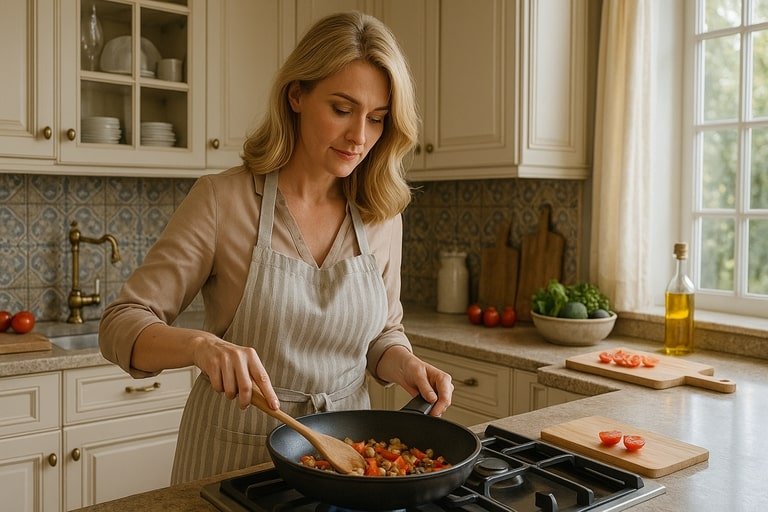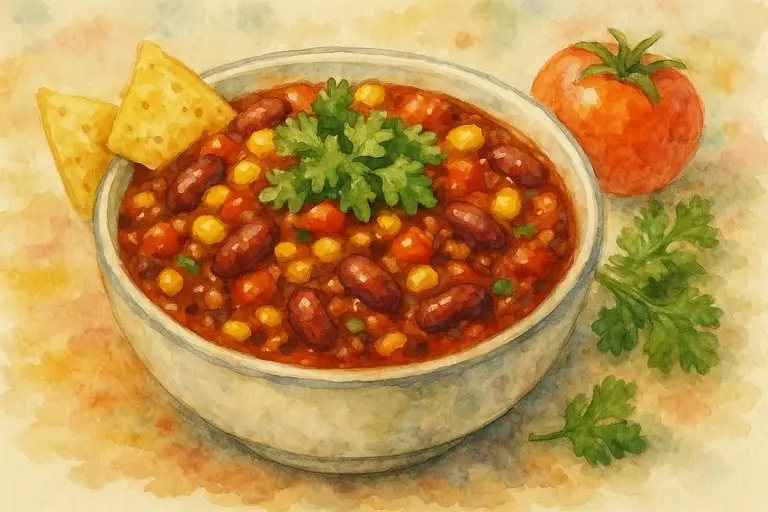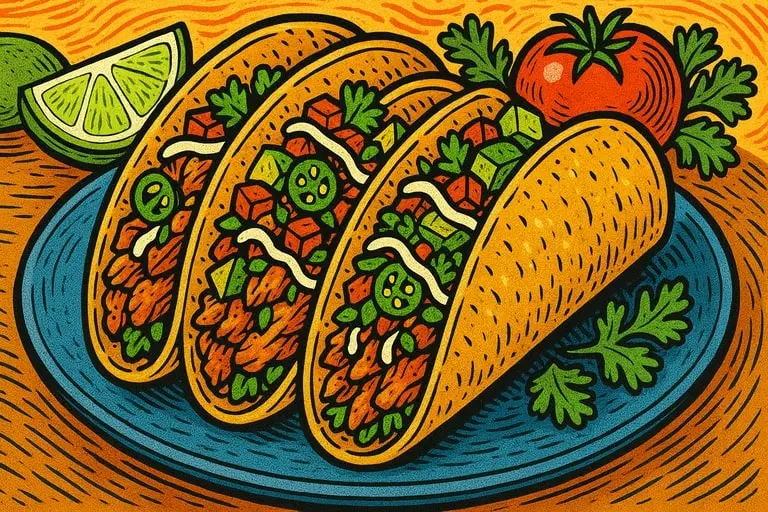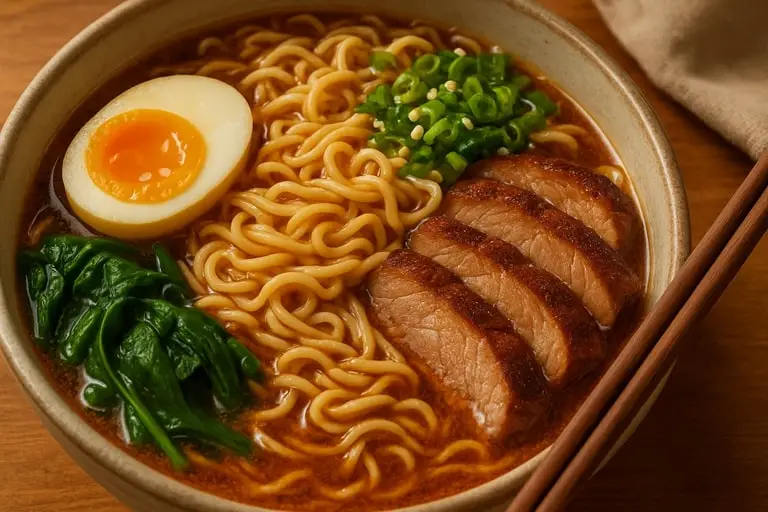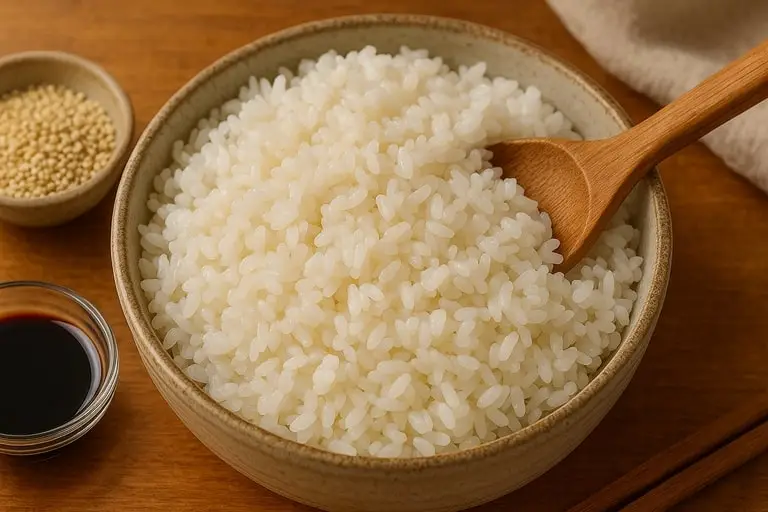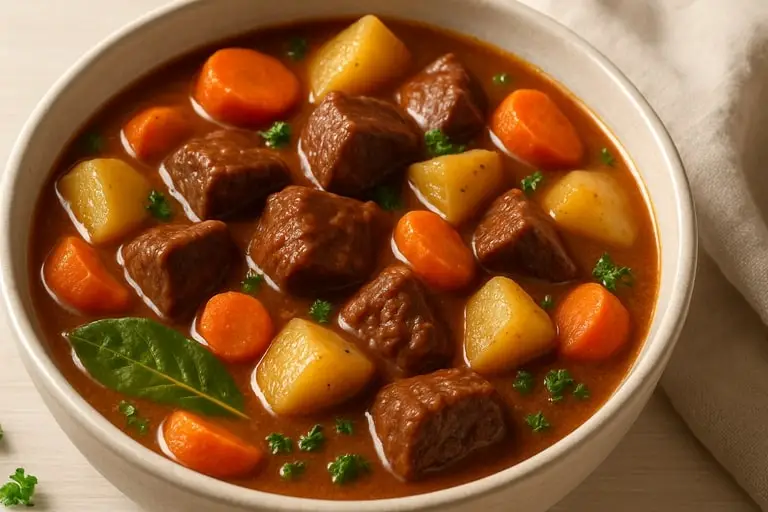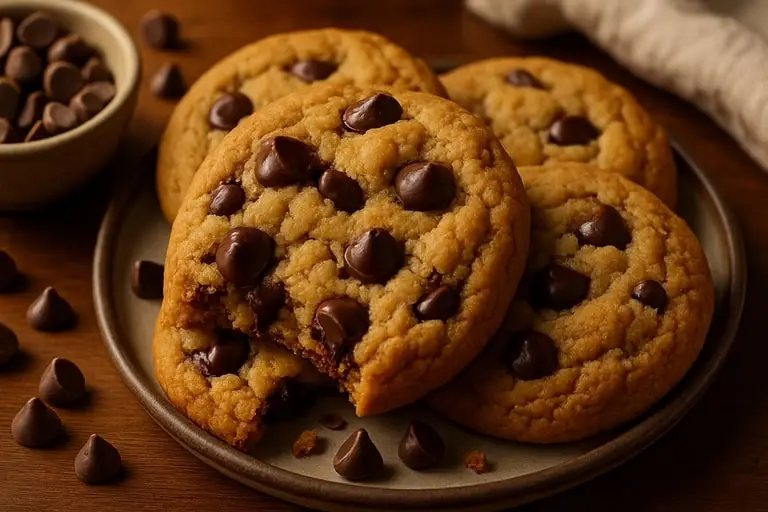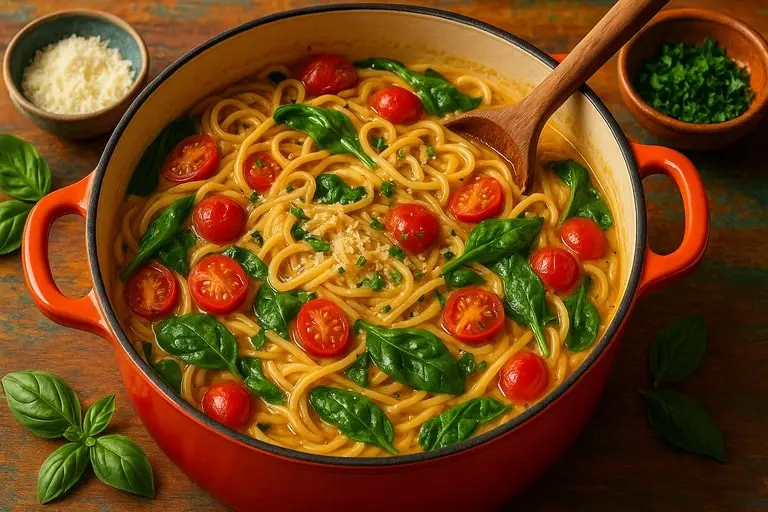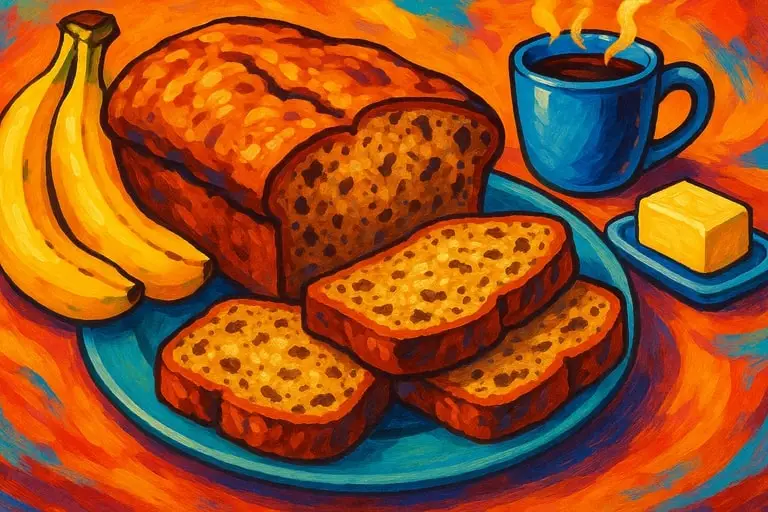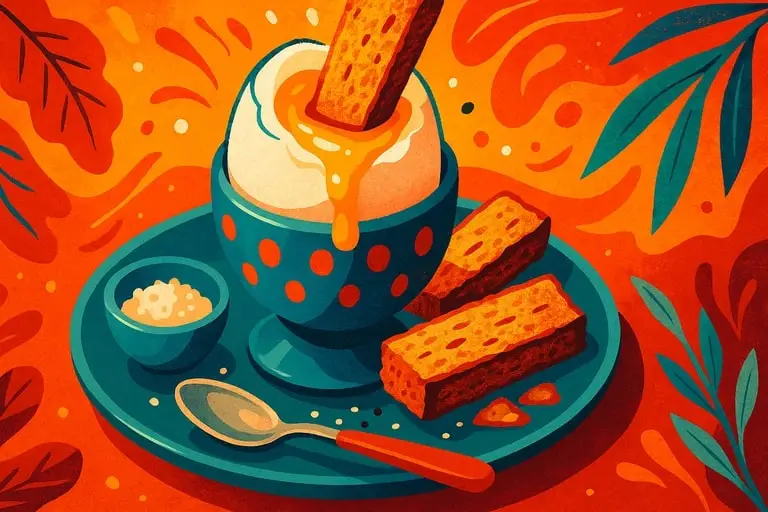Cooking has always stood at the very heart of human civilization, symbolizing the transformation of necessity into creativity. From the moment fire was first harnessed, the preparation of food became not just about survival but about identity, community, and expression. Over centuries, methods evolved, ingredients expanded, and traditions deepened, yet the fundamental act of preparing a meal continues to reflect both who we are and how we live. To study the practice is to study humanity itself, for food preparation has always been a cultural mirror of human progress.
The historical roots of food preparation are as old as humanity. Ancient civilizations cultivated grains, domesticated animals, and developed techniques like fermentation, baking, and preservation. These innovations were responses to the challenges of geography and environment, but they also reflected ingenuity and adaptation. Every recipe that survives carries with it a lineage of discovery and resilience, telling stories of families, migrations, and civilizations long past.
Science plays a central role in every kitchen. Heat alters proteins, starches, and sugars, unlocking aromas and flavors that raw ingredients cannot provide. Fermentation produces beneficial bacteria, extending shelf life while enriching nutrition. Caramelization adds depth and sweetness, while emulsification stabilizes sauces and dressings. By understanding these processes, cooks can move beyond rigid recipes and develop intuition, mastering the balance between technique and creativity.
Health considerations are increasingly central in the modern world. Awareness of chronic diseases and dietary imbalances drives many people to prepare meals at home rather than rely on heavily processed alternatives. Controlling salt, sugar, and fat, incorporating whole foods, and using plant-based proteins allows individuals to take charge of their wellbeing. Kitchens have become preventive healthcare spaces, where thoughtful preparation is as important as taste.
Psychological wellbeing also benefits from preparing food. The rhythm of chopping, stirring, and kneading is calming, grounding people in the present moment. Many view meal preparation as a form of mindfulness, a break from the noise of modern life. The satisfaction of creating something nourishing enhances a sense of control and accomplishment, while the act itself stimulates the senses, from aroma to texture, making it a deeply therapeutic practice.
Cultural traditions are preserved through recipes. Some are recorded in books, but many are passed orally from generation to generation. Each dish is a vessel of memory, embodying rituals, celebrations, and identities. When people recreate traditional meals, they connect with their ancestors and honor their heritage. At the same time, culinary traditions evolve, with spices, methods, and ingredients traveling across borders, blending into new cultural expressions.
Technology has revolutionized modern kitchens. Smart ovens, induction stoves, and digital applications offer precision and convenience. Apps provide nutritional breakdowns, recipes, and even guided video lessons. Yet, no matter how advanced the tools, the essence of preparing food lies in human intuition—taste, smell, and touch. Machines may assist, but it is human creativity that transforms a meal into an experience.
Sustainability has become a defining factor in how food is prepared today. People are more conscious of sourcing local produce, supporting farmers, and reducing food waste. Farm-to-table practices, composting, and mindful shopping connect personal choices to global ecological responsibility. Preparing meals in this context is not only about nourishing the body but also about caring for the environment.
The artistic side of food preparation flourishes in the age of social media. Presentation matters as much as flavor, with vibrant colors, textures, and arrangements transforming meals into visual narratives. Sharing food images highlights the aesthetic dimension, showing that food is not just consumed but celebrated. This artistry turns the act of preparation into a cultural performance as much as a private ritual.
The social function of food remains timeless. Across cultures, the shared meal symbolizes unity, hospitality, and belonging. Preparing food for others is an act of care and generosity, strengthening family bonds and friendships. Even solitary preparation retains intimacy, nourishing both body and soul. Dining together is one of humanity’s oldest rituals, a moment where differences dissolve and community thrives.
Globalization has expanded culinary horizons. Ingredients once rare are now everyday staples, and dishes once regional are enjoyed worldwide. Fusion cuisine blends traditions, creating flavors that represent the interconnectedness of the modern world. Kitchens are now spaces where global exchange meets local creativity, allowing individuals to experiment while honoring tradition.
In the end, preparing food embodies the intersection of art, science, culture, and care. It adapts to new technologies and changing values while maintaining timeless principles. Whether motivated by health, sustainability, creativity, or tradition, the practice continues to define human life. By embracing its depth, people transform kitchens into places of meaning, turning ordinary routines into extraordinary expressions of identity, connection, and love.
Cooking Skills and the Art of Being Cooked
Cooking is more than the preparation of food; it is a discipline that integrates science, culture, and creativity into one practice. From the earliest fires of ancient humanity to today’s professional kitchens, it has always reflected the evolution of both society and individual skill. To understand how a raw ingredient becomes nourishment is to grasp both biology and artistry, for the act of transforming food represents one of the most profound ways humans shape daily life. Mastering the essentials requires more than mechanical repetition—it demands awareness, intuition, and respect for the process.
The first skill every cook must learn is control of the knife. Cutting techniques influence not only the look of a dish but also how evenly ingredients cook. Consistency in slicing ensures that vegetables soften uniformly and meats release flavor at the right pace. Julienne strips, precise dices, and elegant chiffonades demonstrate geometry in action. These movements are the handwriting of the cook, giving structure and order long before heat touches the pan. Without strong knife skills, the rest of food preparation lacks its foundation.
Heat is the invisible language of the kitchen. It is not enough to light a flame or set an oven—true mastery lies in knowing how much energy each ingredient requires. High heat sears and seals, creating crusts and caramelization, while low heat coaxes tenderness through patience. Boiling, roasting, grilling, or braising are not random actions but deliberate choices that alter chemistry. Control of fire and temperature turns raw ingredients into balanced meals, teaching discipline through observation and repetition.
Seasoning is where precision meets artistry. Salt sharpens flavors, herbs provide aroma, and spices add depth. The skilled cook knows when to add each layer, whether in the early stages for subtle infusion or at the final moment for brightness. Overseasoning drowns the natural taste, while restraint may leave a dish flat. To season is to compose music: each element contributes its note, harmonizing into a melody that defines the identity of the meal.
Food communicates readiness not only through recipes but through the senses. The hiss of onions in oil, the fragrance of garlic, the deepening hue of bread in the oven—all are signals guiding the cook. Touch reveals tenderness, smell indicates complexity, and sight confirms transformation. A skilled practitioner listens with every sense, translating signals into timing. This dialogue between food and cook creates adaptability, allowing responses to conditions no written recipe could predict.
Patience is a virtue deeply tied to the kitchen. Rushing a stew ruins its richness, while hurrying to slice meat without resting wastes its juices. Broths and sauces demand hours to develop layers of flavor, and bread must rise in its own rhythm. The lesson is simple yet profound: time is as essential as salt or heat. Just as in life, in the kitchen the best results come from respecting the pace of transformation.
Adaptability separates those who merely follow instructions from those who innovate. Ingredients change with season and region, tools vary by kitchen, and availability shifts with circumstance. A cook who knows how to substitute without compromising quality demonstrates resourcefulness. This flexibility turns scarcity into opportunity, proving that skill is not rigid adherence but responsive creativity. Adaptation reflects resilience, both in cuisine and in character.
Precision should not be confused with inflexibility. Recipes provide frameworks, but taste requires adjustment. A tomato grown in summer may need less salt than one harvested in winter, and pasta may cook differently depending on the flour. Constant tasting, correcting, and observing ensure results that reflect both science and art. Precision guides, but intuition perfects. This balance of rule and instinct defines true expertise.
Cultural exploration enriches technical ability. Exposure to global cuisines introduces new methods: steaming from East Asia, spice layering from South Asia, or fermentation from Northern Europe. Each culture treats ingredients with unique respect, and by practicing these methods, a cook broadens skill and perspective. Food thus becomes not only nourishment but also a bridge between peoples, reminding us that diversity itself is a teacher.
Practice remains the key to mastery. Repetition engraves movements into muscle memory, sharpens sensory awareness, and builds confidence. Cooking a dish once reveals its basics, but preparing it repeatedly under different conditions unlocks its secrets. The lesson lies not only in success but in failure, for each mistake refines technique. Mastery is born not from a single triumph but from countless attempts.
Respect underlies every aspect of skill. Respect for the ingredient, which represents labor and environment; respect for the process, which demands time and attention; respect for those who will share the meal, for whom nourishment becomes connection. To cook is to care, and to develop skill is to deepen that care. The plate is not only a product but a message of generosity and gratitude.
In the end, cooking skills embody more than competence. They represent the harmony of science and humanity, of control and surrender, of individuality and tradition. Through knife mastery, heat control, seasoning, patience, and adaptability, a cook becomes not only a provider of meals but also a storyteller of culture and care. Food is more than taste—it is memory, comfort, and identity. By cultivating skill, one learns that every dish holds meaning, and that the act of preparing it is as nourishing to the spirit as it is to the body.
Cooking Adventures with Healthy Cooking Tips
Cooking adventures often begin in unexpected ways, whether sparked by curiosity, necessity, or inspiration from others. Each new attempt in the kitchen represents an exploration, a willingness to experiment with flavors and techniques. For those embarking on this path, healthy cooking tips provide a compass that ensures not only delicious results but also benefits for long-term well-being. By merging creativity with practical guidance, cooking becomes a lifelong journey of discovery and improvement.
One essential healthy cooking tip is to prioritize whole ingredients. The foundation of adventurous cooking lies in fresh produce, whole grains, and unprocessed proteins. Using these elements provides richer flavors and more nutrients than heavily refined products. For example, preparing brown rice instead of white introduces deeper taste and higher fiber, enhancing both palate and health. Such choices exemplify how small adjustments in cooking transform everyday meals into nutrient-dense experiences.
Another valuable tip is to minimize excessive fats without sacrificing flavor. Instead of deep-frying, techniques like baking, grilling, or air frying allow foods to retain crisp textures with less oil. Cooking with olive oil instead of hydrogenated fats improves cardiovascular outcomes while enriching dishes with subtle fruitiness. Through such substitutions, cooking aligns indulgence with responsibility, proving that taste and health need not conflict.
Cooking adventures also expand when incorporating herbs and spices creatively. These natural flavor enhancers reduce reliance on excessive salt or sugar while contributing antioxidant properties. Cinnamon in oatmeal, turmeric in soups, or fresh basil in salads demonstrate how simple additions elevate both taste and wellness. Experimentation with herbs encourages adventurous cooking, as each spice introduces cultural depth and health benefits simultaneously.
Portion control is another dimension of healthy cooking. Preparing meals at home allows precise regulation of serving sizes, preventing overconsumption common in restaurants. Cooking in balanced proportions fosters awareness of satiety, helping individuals align eating habits with energy needs. This discipline highlights that adventurous cooking is not about excess but about thoughtful design of meals that support vitality.
Mindful preparation of proteins contributes greatly to health. Lean meats, legumes, and plant-based alternatives offer variety without overwhelming the body with saturated fats. Cooking methods like steaming fish or simmering lentils preserve nutrients better than heavy frying. Including diverse protein sources reflects adventurous cooking while aligning with nutritional goals. It also supports ecological sustainability, as plant-based proteins reduce environmental impact compared to industrial meat production.
Cooking adventures grow richer when exploring global cuisines that emphasize balance. Mediterranean traditions rely on vegetables, legumes, and olive oil, while Japanese methods highlight seasonal fish and rice. These culinary models exemplify healthy cooking tips embedded in cultural practice. Adopting such principles not only broadens taste horizons but also introduces balanced, time-tested dietary patterns that reinforce well-being.
Hydration through food is another overlooked aspect. Cooking with water-dense vegetables like cucumbers, tomatoes, or zucchini contributes to fluid intake naturally. Soups and broths also provide hydration while delivering nutrients efficiently. By prioritizing water-rich foods, cooking adventures gain both flavor and function, supporting bodily systems in subtle but significant ways.
The practice of reducing food waste complements healthy cooking. Using vegetable peels for broths, repurposing leftovers into soups, or freezing excess portions minimizes loss while expanding culinary creativity. This habit not only supports environmental sustainability but also encourages innovation in cooking. Turning constraints into opportunities epitomizes the adventurous spirit.
Cooking adventures culminate in the joy of sharing meals. Healthy cooking tips take on greater value when meals are enjoyed with others, reinforcing bonds of family and community. Cooking becomes storytelling, each dish narrating a chapter of care and creativity. The act of sharing amplifies health benefits by reducing isolation, enhancing mental well-being, and creating rituals of connection.
In essence, cooking adventures fueled by healthy cooking tips redefine the kitchen as a space of possibility. By embracing fresh ingredients, mindful techniques, and global perspectives, anyone can embark on a journey where taste meets nourishment. These practices ensure that cooking is not merely survival but celebration—a lifelong exploration of health, culture, and joy.
Food is one of the most powerful connectors of people, transcending borders, languages, and generations. The act of preparing a meal goes far beyond basic survival; it is about creativity, heritage, and shared experience. When people search for information on cooking, they are often looking not just for recipes but also for techniques, traditions, and stories that give meaning to the food on their table.
At its heart, preparing food is both an art and a science. The art lies in creativity, presentation, and cultural expression, while the science is in chemistry, biology, and physics that make flavors come alive. From caramelization to fermentation, understanding the science behind food preparation allows individuals to elevate everyday meals into memorable experiences.
Cultural traditions shape what we eat and how we prepare it. In some societies, meals are elaborate rituals, while in others, simplicity defines the table. Festivals and family gatherings often revolve around dishes that symbolize history and identity. Every culture tells its story through food, making the act of preparing meals a living museum of human experience.
Technology has also transformed the kitchen. From high-tech ovens and precision cookers to apps that guide meal planning, modern tools make it easier for people to prepare food with accuracy and confidence. Yet, despite these advancements, the essence remains rooted in the simple joy of combining ingredients into something nourishing and delicious.
Health considerations now play a central role in kitchens worldwide. People increasingly choose fresh, local, and unprocessed ingredients to support well-being. Understanding nutrition, portion balance, and ingredient quality empowers individuals to make better decisions while still enjoying diverse flavors. This balance between health and pleasure defines a new era of mindful eating.
Sustainability is another major influence on food preparation today. Concerns about the environment inspire cooks to reduce waste, use seasonal produce, and embrace plant-based options. By doing so, preparing food becomes an act of responsibility, shaping not only personal health but also the future of the planet.
The social aspect is equally vital. Cooking together builds relationships, strengthens families, and fosters community. Teaching children to prepare meals passes down knowledge and cultivates appreciation for food. Shared kitchens in schools, workplaces, and communities highlight how food unites people in powerful ways.
Globalization has broadened horizons. Today, recipes travel faster than ever, and individuals experiment with flavors from around the world. Fusion cuisine, which blends traditions from different cultures, shows how preparing meals continues to evolve while celebrating diversity.
Media and entertainment have amplified this interest. Television shows, online tutorials, and food blogs inspire millions daily. Chefs become celebrities, while home cooks gain recognition for creativity and innovation. The popularity of food content demonstrates that kitchens are not just private spaces but stages for cultural exchange.
Education is also key. Culinary schools train professionals, but everyday enthusiasts also benefit from learning basic skills. Knife techniques, food safety, and flavor pairing form the foundation for more advanced exploration. In this sense, cooking is both accessible to beginners and limitless for experts.
Emotional connection should not be overlooked. The smell of a favorite dish or the taste of a childhood recipe evokes powerful memories. Preparing meals becomes a way to preserve identity, celebrate milestones, and comfort the soul.
Ultimately, preparing food reflects who we are and how we live. It combines tradition, innovation, health, and creativity into a single practice that sustains both body and spirit. The universal appeal of cooking ensures it will remain central to human culture for generations to come.
For millions worldwide, cooking is more than a necessity; it is a passion, a craft, and a cultural expression. Whether at home or in professional kitchens, the art of cooking continues to evolve, blending tradition with innovation. This article explores how cooking shapes daily life, supports health, and connects communities across the globe.
At its foundation, cooking transforms raw ingredients into nourishment. Heat changes texture, unlocks flavors, and makes food safer to consume. Techniques like roasting, steaming, and frying each create distinct results, proving how versatile cooking can be. The science of transformation lies at the heart of why cooking is both fascinating and essential.
One of the greatest joys of cooking is creativity. Home cooks and chefs alike experiment with spices, herbs, and textures to create unique dishes. From traditional recipes passed down for generations to modern fusion cuisine, cooking allows endless room for exploration.
Health is another important dimension. People increasingly turn to mindful cooking practices that emphasize whole foods, reduced sugar, and balanced nutrition. Preparing meals at home empowers individuals to control ingredients, portion sizes, and cooking methods, making it easier to maintain long-term wellness.
The cultural value of cooking cannot be overstated. Every culture has signature dishes that tell stories of heritage, geography, and history. Learning different approaches to cooking is a way of traveling the world without leaving the kitchen, experiencing diversity through taste.
Technology has transformed modern cooking. Precision tools like sous-vide machines and smart ovens ensure consistent results, while online platforms share recipes instantly. These innovations make cooking more accessible than ever before.
Sustainability also plays a growing role in cooking. Reducing waste, supporting local farmers, and embracing plant-based ingredients make kitchens more environmentally responsible. People are increasingly aware of how their cooking choices affect the planet.
The social aspect remains timeless. Family gatherings, celebrations, and even casual dinners strengthen bonds. Teaching children about cooking instills lifelong skills and appreciation for healthy eating. Food prepared together creates memories that last far beyond the meal itself.
Entertainment media has made cooking a global spectacle. Popular shows, competitions, and social media platforms highlight culinary creativity, inspiring millions to experiment at home. This wave of enthusiasm has brought cooking into mainstream culture like never before.
Education is central for progress. From formal culinary schools to online tutorials, learning the fundamentals of cooking empowers people to improve skills and confidence. Knowledge of food safety, knife handling, and flavor pairing forms the backbone of better meals.
Emotional connections to food are powerful. The act of cooking evokes nostalgia and comfort, linking people to family traditions and personal history. The aroma of a favorite dish or the taste of a special recipe can instantly transport someone back in time.
In conclusion, cooking is far more than daily routine. It embodies creativity, health, cultural heritage, and sustainability. As society continues to evolve, cooking remains a timeless practice that nourishes both body and spirit, connecting humanity across generations.
The kitchen is often described as the heart of the home, and for good reason. The act of cooking brings people together, nourishes families, and expresses creativity. As lifestyles shift and cultures blend, cooking remains a universal activity that adapts to modern needs while preserving traditional values.
At its core, cooking is a transformation process. Raw ingredients become delicious meals through heat, time, and technique. Roasting develops rich flavors, steaming preserves nutrients, and grilling adds smoky complexity. These methods illustrate why cooking is both practical and artistic.
Experimentation is central to cooking. By combining spices, herbs, and textures, people create dishes that reflect personality and imagination. Whether recreating ancestral recipes or inventing new ones, cooking allows limitless creativity.
Health-conscious individuals increasingly see cooking as a way to control their diet. Preparing meals at home ensures fresh ingredients, reduced processed foods, and balanced nutrition. In this way, cooking becomes not just about taste but also long-term wellness.
Cultural identity is deeply tied to cooking. Each region boasts dishes that tell stories of geography and history. Exploring international recipes expands horizons, allowing people to appreciate diversity while practicing global citizenship in the kitchen.
Modern tools and technology simplify cooking. Smart ovens, blenders, and guided apps help even beginners achieve professional results. Yet, despite advancements, the emotional satisfaction of cooking with simple tools remains timeless.
Sustainability shapes many kitchens today. Choosing seasonal produce, reducing food waste, and incorporating plant-based meals make cooking environmentally responsible. These practices demonstrate how culinary choices influence planetary health.
The social side of cooking is irreplaceable. Families gather around food, friends bond over shared meals, and communities celebrate through culinary traditions. Teaching children the basics of cooking ensures that these traditions carry into the future.
Media has expanded the reach of cooking. Television chefs, YouTube tutorials, and social media challenges make food preparation entertaining and educational. This visibility encourages people to experiment and share their own creations.
Education enhances confidence. Learning knife skills, food safety, and basic techniques builds a strong foundation. Culinary schools and online lessons open doors for those eager to master the craft of cooking.
Emotions run through every recipe. Nostalgia, comfort, and joy are tied to the act of preparing meals. A familiar aroma or favorite taste creates memories that last a lifetime, proving that cooking is as much about the heart as the stomach.
Ultimately, cooking embodies the balance between art, health, science, and culture. It adapts to new tools and trends while preserving timeless traditions. The continued importance of cooking shows its role not only in survival but in human connection, creativity, and happiness.
Food is far more than sustenance; it is memory, culture, science, and art woven together in daily life. Preparing meals is one of the oldest human activities, passed down from generation to generation, evolving alongside civilization. When people search for insights on cooking, they are engaging in a timeless dialogue that connects ancient traditions with modern innovation, creating a thread that ties communities and families together.
Every dish tells a story, whether it comes from a centuries-old tradition or a spontaneous experiment in the kitchen. Techniques like fermenting, baking, roasting, and steaming each have cultural roots that stretch back into history, often reflecting geography and available resources. The preparation of food has always been an expression of identity, and studying it reveals how people adapted to survive, thrive, and celebrate through the ages.
The science behind food preparation is as fascinating as its cultural side. Heat transforms raw materials, breaking down fibers and releasing new flavors. Proteins denature, sugars caramelize, and fats create layers of taste. Understanding these processes gives modern cooks the ability to refine textures, preserve nutrients, and heighten aromas, turning everyday meals into carefully balanced experiences.
Health has become a central part of food preparation today. As awareness of nutrition grows, individuals are more mindful of what they eat and how it is prepared. Choosing fresh ingredients, moderating portion sizes, and balancing macronutrients helps prevent chronic illness while supporting energy and wellbeing. Home-prepared meals allow people to control salt, sugar, and additives, making them healthier than heavily processed options.
Sustainability is another defining aspect of contemporary food culture. Choosing seasonal produce, minimizing waste, and sourcing responsibly grown ingredients are acts of environmental stewardship. Reducing single-use packaging, composting scraps, and finding creative uses for leftovers turn kitchens into spaces of eco-friendly innovation. In this sense, preparing food becomes part of a larger responsibility to the planet.
Technology has expanded culinary possibilities. Precision devices, smart ovens, and mobile apps help both beginners and professionals achieve consistency. Online tutorials, digital recipe libraries, and global communities of food lovers make learning accessible to anyone with an internet connection. This democratization of culinary knowledge ensures that traditions survive while new methods continue to emerge.
The social dimension of preparing meals is profound. Families gather around the table to share stories, friends celebrate milestones with feasts, and communities bond over festivals that revolve around food. Teaching children the basics not only equips them with essential life skills but also instills values of patience, creativity, and gratitude. Food brings people together like few other activities can.
Globalization has diversified kitchens. Ingredients once considered exotic are now commonplace, and dishes from one culture inspire fusion creations in another. This exchange broadens horizons, allowing people to travel the world through flavors without leaving their homes. It also challenges chefs to honor authenticity while embracing innovation.
Media has amplified interest in food culture. Cooking shows, social platforms, and streaming channels showcase techniques, competitions, and stories that inspire audiences everywhere. Chefs are now celebrities, and home cooks can reach global audiences by sharing their passion online. The result is a worldwide movement where knowledge circulates rapidly, sparking creativity across borders.
Education is another critical pillar. Culinary schools formalize knowledge, while workshops and online classes make training more accessible. Learning foundational skills such as knife handling, flavor pairing, and food safety provides the confidence to experiment and innovate. In this way, education empowers everyone from casual cooks to aspiring professionals.
Emotional connection gives food its deepest meaning. The aroma of a grandmother’s recipe or the taste of a childhood favorite can evoke powerful nostalgia. Preparing meals becomes a way of preserving memory, strengthening identity, and sharing love. These intangible qualities are what make preparing food far more significant than mere nutrition.
Ultimately, preparing meals is a universal language. It bridges differences, nurtures health, and expresses creativity. It is both ancient and modern, humble and sophisticated, practical and emotional. In every corner of the world, the act of preparing food reflects resilience, joy, and human connection — ensuring that the story of humanity continues to be written one dish at a time.
Food preparation has always been more than a practical task; it represents a form of expression that defines cultures, communities, and personal identity. Since ancient times, humans have gathered around fires, shared meals, and celebrated rituals tied to nourishment. Across civilizations, preparing food has become one of the central ways people connect with their heritage. When modern readers search for insights into cooking, they are really looking into this deeper human story of tradition and transformation.
The act of transforming raw ingredients into edible meals is as old as humanity itself. Early civilizations discovered fermentation, baking, and roasting, building the foundation for culinary traditions that persist today. Each method reflects adaptation to geography: coastal societies perfected seafood preparation, while agricultural regions developed rich grain-based cuisines. These choices show how food is intertwined with environment, survival, and creativity.
Science plays a silent yet essential role in every kitchen. Caramelization brings sweetness, proteins change structure under heat, and fats carry flavors across the palate. Every aroma, texture, and taste is the result of chemistry and biology working in harmony. Understanding these processes empowers both professional chefs and home enthusiasts to refine flavors while protecting nutrients.
Health has become an increasingly central concern in food preparation. With rising awareness of chronic illness, people pay closer attention to ingredients, portion sizes, and cooking methods. Balanced diets rich in whole foods, vegetables, and lean proteins help maintain vitality. Preparing meals at home gives individuals control over additives, sugar, and sodium, encouraging mindful choices that support long-term wellbeing.
Sustainability has also entered kitchens worldwide. Choosing seasonal produce, supporting local farmers, and minimizing waste turn meal preparation into an act of environmental responsibility. Creative use of leftovers, composting, and embracing plant-based meals all contribute to healthier ecosystems. In this way, the everyday act of preparing food becomes part of a collective effort to preserve the planet.
Technology has transformed culinary habits. Modern appliances such as induction stoves, air fryers, and precision cookers simplify techniques once reserved for professionals. Digital platforms expand access to global recipes and tutorials, enabling anyone with curiosity and a smartphone to explore international cuisines. This technological revolution ensures that knowledge, once limited to kitchens or classrooms, now flows freely across the world.
The social role of food preparation is profound. Meals symbolize unity, whether at family dinners, weddings, or community festivals. Cooking together teaches collaboration, patience, and gratitude. For children, learning how to prepare food builds independence and appreciation for tradition. For adults, shared meals reinforce bonds, turning everyday nourishment into lasting memories.
Globalization has diversified what people eat. Spices from Asia, grains from Africa, and flavors from Latin America now cross continents with ease. Fusion cuisines blend traditions, creating entirely new expressions of taste. This cultural exchange shows how the act of preparing food is never static but constantly evolving, embracing innovation while respecting roots.
Media has amplified interest in food culture. Celebrity chefs, reality competitions, and online influencers transform kitchens into public stages. Millions tune in daily for inspiration, recipes, and education. This entertainment not only inspires but also builds communities of enthusiastic learners, proving that food content is as powerful as any cultural export.
Education underpins all culinary progress. Whether through formal schools, workshops, or digital courses, the transfer of skills equips people to approach food with confidence. Mastering basics like knife safety, food hygiene, and seasoning enables creativity and innovation. With education, every individual gains tools to turn daily meals into experiences of joy and nourishment.
Emotions are inseparable from food. The smell of a holiday dish or the taste of a childhood favorite evokes memories of belonging and comfort. Preparing meals becomes a way of storytelling, carrying values and love across generations. These intangible aspects make food preparation one of the most deeply human activities.
In the end, preparing food is a universal practice that bridges health, culture, science, and connection. It is a timeless ritual that adapts to new tools, modern awareness, and shifting cultural landscapes. As humanity continues to evolve, the enduring power of cooking ensures that the act of creating meals will always remain at the heart of what it means to live, share, and celebrate together.
Food preparation has always stood at the center of human civilization. From the earliest moments when fire was discovered, communities gathered around it, transforming raw ingredients into nourishment and stories. Every meal carried meaning, whether it marked survival, ritual, or celebration. This ancient act has traveled across centuries, adapting to new technologies and ingredients, yet always remaining a defining element of culture. Today, when people look into the practice of cooking, they are looking into one of the deepest aspects of human heritage.
The cultural identity of nations is written in their dishes. Ingredients reflect geography: rice in Asia, wheat in Europe, maize in the Americas. Spices illustrate trade routes and historical exchange, turning meals into living evidence of global interaction. Each preparation technique, whether steaming, roasting, or fermenting, holds not only nutritional purpose but also symbolic weight. Through food, societies tell stories of hardship, prosperity, conquest, and migration.
Beyond symbolism, the science of food preparation demonstrates humanity’s ingenuity. Heat changes chemical structures, unlocking flavors, making food digestible, and sometimes enhancing nutritional value. Fermentation creates probiotics and preserves perishables. Drying and curing extend shelf life, ensuring survival through seasons. The kitchen, in this sense, is as much a laboratory as it is a place of comfort.
In modern times, health concerns have reshaped approaches to food. Growing awareness of chronic diseases has inspired people to focus on balanced nutrition, portion control, and clean ingredients. Preparing meals at home empowers individuals to manage salt, sugar, and fat intake. This control fosters healthier lifestyles while still allowing room for indulgence and creativity.
Sustainability has entered the spotlight as environmental awareness grows. Reducing waste, sourcing locally, and choosing seasonal ingredients are part of eco-conscious food preparation. Kitchens become stages for small but meaningful acts of environmental stewardship. Composting, repurposing leftovers, and embracing plant-based options reflect a growing alignment between food choices and planetary wellbeing.
Technology has brought sophistication to daily food practices. High-precision appliances, smart devices, and global recipe platforms have transformed what once required years of training into accessible skills. A person with curiosity, internet access, and basic tools can now explore techniques once reserved for master chefs. This democratization of knowledge has ignited a renaissance in food culture.
The social dimension remains central. Meals bring families together, strengthen friendships, and unite communities. Teaching children food skills builds not only independence but also respect for resources. Collective cooking events—from communal feasts to cooking classes—reinforce human bonds, creating memories and passing traditions across generations.
Globalization has expanded the menu of possibilities. Dishes once considered exotic are now commonplace, while fusion cuisines blur lines between cultures. A bowl of ramen can be enjoyed in New York, while tacos inspire dishes in Asia. This exchange demonstrates how food acts as a living, evolving dialogue between peoples.
Media has made culinary exploration mainstream entertainment. Television programs, competitions, and digital platforms have transformed kitchens into global stages. Amateur cooks share recipes that reach millions, while celebrity chefs influence entire industries. This visibility has elevated food preparation from private routine to cultural phenomenon.
Education underpins both traditional and modern progress. Culinary schools, workshops, and online tutorials provide structured pathways for skill development. Knife mastery, hygiene, and flavor pairing form the foundation, while advanced techniques open doors to innovation. Learning ensures that even as recipes evolve, fundamental knowledge remains intact.
Emotions give food its deepest power. The scent of a grandmother’s dish or the flavor of a holiday meal links people to memory and belonging. Preparing food becomes an act of love, remembrance, and continuity. These intangible aspects make culinary practice not only practical but also profoundly human.
Ultimately, food preparation is humanity’s universal language. It embodies history, creativity, health, and sustainability. It adapts with time yet remains timeless. Whether practiced with ancient tools or modern devices, it continues to nourish bodies and souls alike, reflecting our shared humanity through every dish.
From the dawn of civilization to the present, preparing meals has been one of humanity’s most vital practices. It represents survival, culture, innovation, and artistry. Across every continent, food serves as both fuel and expression, providing not only nutrition but also identity. The practice of cooking illustrates how people have always adapted, experimented, and connected through flavors and techniques.
At its foundation, preparing food is chemistry in action. Proteins denature under heat, sugars caramelize, and starches gelatinize. These transformations alter texture, flavor, and digestibility. Understanding this science allows cooks to refine methods, elevate dishes, and create harmony between taste and nutrition. This interplay of molecules explains why food preparation is as much about knowledge as creativity.
Traditions elevate food from necessity to culture. Each society treasures recipes that embody its history. Indian spices reflect ancient trade, Italian pasta symbolizes community, and African stews represent adaptation to climate. By preserving recipes, families preserve heritage, making food one of the most powerful carriers of identity.
Health-driven preparation is a modern priority. Today’s kitchens focus on nutrient-dense meals, balanced macronutrients, and mindful portions. People use food as medicine, preventing disease through vegetables, lean proteins, and whole grains. Unlike processed meals, home-prepared dishes allow for precise control over what enters the body.
Sustainability adds another layer of responsibility. Choosing seasonal produce, reducing food waste, and supporting local farms align kitchens with ecological awareness. The growing trend toward plant-based meals reduces environmental strain, while creative use of leftovers ensures efficiency. In this way, preparing meals is also an act of stewardship.
Technology enhances the experience. Smart appliances, induction stoves, and online recipe apps expand access to techniques once reserved for professional chefs. Home cooks experiment with sous-vide or fermentation thanks to digital communities. Knowledge sharing has never been so easy, allowing traditions and innovations to blend seamlessly.
Food remains a social glue. Shared meals foster connection, mark milestones, and strengthen families. Cooking classes, food festivals, and communal kitchens illustrate how preparing food creates bonds across cultures. These experiences prove that food is more than sustenance; it is connection.
Global influences enrich the kitchen. Sushi inspires rolls in Europe, while burgers gain spicy twists in Asia. Fusion cuisine demonstrates cultural blending, turning kitchens into laboratories of creativity. This global exchange broadens palates and creates endless innovation.
Entertainment amplifies this fascination. Food television, blogs, and social platforms inspire millions to experiment. Celebrity chefs transform dishes into art, while everyday people become influencers by sharing authentic recipes. Kitchens have become global stages where creativity is celebrated.
Education secures the future of food culture. Whether through culinary academies or online tutorials, skill-building ensures safety and creativity. Foundational knowledge—hygiene, knife skills, flavor pairing—empowers experimentation and mastery. Learning bridges the gap between heritage and modern innovation.
Emotions remain inseparable from meals. Familiar aromas evoke memories, while favorite recipes provide comfort and joy. Preparing meals becomes a language of love and remembrance, connecting generations and anchoring identity.
Ultimately, preparing food is a blend of science, culture, health, and art. It evolves with technology but retains timeless value. By embracing sustainability, creativity, and knowledge, humanity ensures that this universal practice continues to nourish body and soul alike.
Food preparation is one of humanity’s oldest skills, deeply woven into the story of civilization. From the first sparks of fire to the sophisticated kitchens of today, people have relied on food not only for survival but also for joy, ritual, and connection. In modern society, when individuals explore cooking, they are engaging with a tradition as ancient as humanity itself, yet constantly renewed by creativity and innovation.
The process of transforming raw ingredients is a marvel of science. Heat, fermentation, and preservation techniques allow food to become safer, tastier, and more digestible. Each method reveals the ingenuity of humans in adapting to their environment. These scientific principles are still at play in every modern kitchen, though often hidden beneath routine.
Cultural heritage gives food meaning. Dishes symbolize family, region, and identity. Recipes passed through generations act as living history, carrying memories of ancestors. Through food, people tell stories about their struggles and triumphs. Cultural festivals highlight this by centering rituals around specific dishes, blending tradition with celebration.
Modern lifestyles place health at the forefront of meal preparation. With growing concerns about diet-related illnesses, individuals turn to home-cooked meals to prioritize balance. Fresh vegetables, lean proteins, and whole grains form the foundation of wellness-focused kitchens. In this sense, preparing food is also a form of preventive healthcare.
Environmental concerns have reshaped the kitchen. Sustainable choices—seasonal produce, less waste, and reduced reliance on heavily processed ingredients—have become priorities. By adopting responsible practices, households contribute to global ecological goals. These shifts illustrate how the personal act of preparing food links directly to planetary wellbeing.
Technology has accelerated change. From advanced cooking appliances to mobile recipe platforms, innovation has democratized access to culinary skills. With smartphones and smart kitchens, individuals across the world can replicate complex techniques once limited to professionals. The internet has created a new era of global recipe exchange.
Socially, meals continue to serve as rituals of togetherness. Family dinners, community feasts, and celebrations center on food. Preparing meals together fosters collaboration and gratitude, passing knowledge across generations. Even in urban lifestyles, food retains its ability to unite people around a table.
Global influences enrich kitchens everywhere. Today, sushi can be prepared in South America, while African spices flavor dishes in Europe. Fusion cuisines demonstrate humanity’s creativity in combining traditions. This cultural exchange shows how the global community continues to expand culinary boundaries.
Entertainment has amplified fascination with food. Cooking shows, competitions, and digital platforms inspire experimentation. Food has become both a private joy and a public spectacle, celebrated on screens and in kitchens alike. This has broadened appreciation for the skill and artistry behind every dish.
Education ensures continuity. Culinary schools, apprenticeships, and online lessons provide structured knowledge, blending traditional techniques with modern science. Skills like flavor balancing and food safety remain vital as the foundation of innovation.
Emotion imbues food with power. The aroma of a cherished recipe or the taste of a childhood dish evokes memory and comfort. Meals act as vessels of love and continuity, carrying intangible meaning that transcends flavor alone.
In the end, preparing food is both timeless and adaptive. It represents survival, health, culture, and art in one practice. Across centuries, it has sustained humanity and will continue to do so, reflecting not only who we are but also who we aspire to become.

